- Accueil
- > Shakespeare en devenir
- > N°18 — 2024
- > L’Œil du spectateur. Play Reviews
- > Romeo @ Juliet, Rostyslav Derzhypilskyi: “Have you ever watched Romeo and Juliet with a helmet on?”
Romeo @ Juliet, Rostyslav Derzhypilskyi: “Have you ever watched Romeo and Juliet with a helmet on?”
“Ivan Franko” National Academic Drama Theatre, Ivano-Frankivsk, Ukraine
Par Yuliia Shchukina et Liudmyla Vaniuha
Publication en ligne le 14 décembre 2024
Article au format PDF
Romeo @ Juliet, Rostyslav Derzhypilskyi: “Have you ever watched Romeo and Juliet with a helmet on?” (version PDF) (application/pdf – 470k)
Texte intégral
Romeo @ Juliet, Rostyslav Derzhypilskyi
New translation by Yurii Andruhovych
Reading from the Revelation of John the Theologian, Apocalypse
Cast
Romeo Montecchi: Oleh Panas
Juliet Capulet: Inna Bevza
Brother Lorenzo: Oleksii Hnatkovskyi
Juliet’s Nurse: Olha Komanovska
Senior Montecchi, Romeo’s Father: Ihor Zakharchuk
Signora Capulet, Juliet’s mother: Myroslava Polataiko, Tetiana Hirnyk
Senior Capulet, Juliet’s Father: Yurii Khvostenko
Paris: Andrii Melnyk
Tybalt, Juliet’s Cousin: Yurii Vykhovanets
Mercutio, Romeo’s friend: Ivan Blindar
Erynia: Halyna Barankevych, Mariia Stopnyk
Erynia: Nadiia Levchenko
Erynia: Olesia Pasichniak
Monks: Viktor Abramiuk, Vladyslav Demydiuk, Oleh Derkach, Bohdan Romaniuk, Ostap Sloboda, Mykola Slyvchuk
Creative team
Composers: Roman Hryhoriv, Illia Razumeiko
Scenography, costumes: Yuliia Zaulychna
Choreography: Olha Semioshkina
Assistant directors: Andrii Felyk, Liubov Skirko
1Rostyslav Derzhypilskyi, a Ukrainian National Prize winner and the current director of “Ivan Franko” Drama Theatre situated in Ivano-Frankivsk, West Ukraine, is known for his non-canonical approach to the classics. He has boldly experimented on the acting spaces for his two Shakespeare projects. In 2017, his Hamlet, conceived as a “neo-horror opera”, which won the Ukraine Festival Award, was performed in the basement of the theatre and was subsequently taken to the ruins of Pniv Castle, in the Cis-Carpathian region.
2At the beginning of 2021, Derzhypilskyi presented the second part of his Shakespeare duology, Romeo and Juliet, which he performed in three distinct locations within the town of Ivano Frankivsk: PromPrylad, a dilapidated industrial plant in the process of being renovated; a progression through the city streets; the basement of the theatre. Spectators and performers had to move from one to the next venue, modelled after a concept of street theatre that, according to Derzhypilskyi, was current during Shakespeare’s time and that he wanted to update.
3Gathered near the industrial plant before the performance, the spectators received instructions on industrial safety, were asked to put on a construction helmet, and were given maps with the routes they would have to follow around the city to get to the performance venues.
4Before the spectators were led into the machine shop of the industrial plant, they could see the actors playing the main characters standing above in the watch tower, as if checking the start of a work shift. An order was heard (was it from the foreman, the director, God?), “Begin”, and the huge doors slowly opened with a loud creak. Now the spectators were conditioned to enter a “post-apocalyptic” space; they had the key to understand, in modern terms, the cruelty of the world in which Romeo and Juliet met and fell in love. Inside, the volume of the neo-Gothic music (the musical concept of the performance was developed by Roman Hryhoriv and Illia Razumeiko, composers of Kyiv) was deafening. As a counterpoint, Juliet rushed forward to sing an aria from Haendel’s opera Rinaldo, a baroque piece in which true love prevails after war, magic, and deceit. From the start, through the use of contrasted music, Derzhypilskyi aimed at showing “the collision of spirituality, of heavenly faith and love” of the young couple in a hostile, brutal world.
5In this huge non-theatrical space, the spectators had to move to the several locations used as playing areas to watch the play in action.
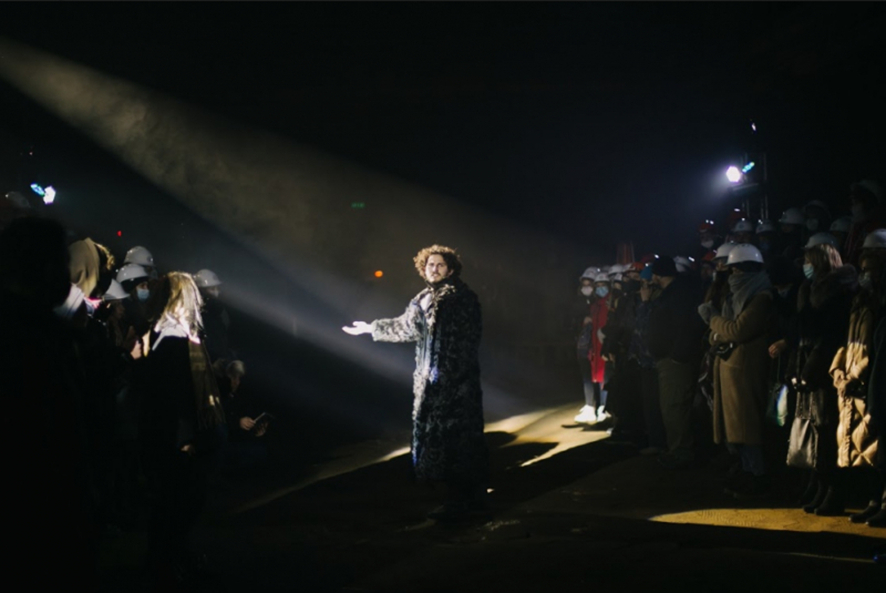
Figure 1. Mercutio (Ivan Blindar) in the centre of the acting area.
Crédits. All photographs were provided by the Press Service of “Ivan Franko” National Drama Theatre, Ivano-Frankivsk.
6The performers took advantage of this industrial setting in the acting of their parts. Brother Lorenzo (Oleksii Hnatkovskyi) used the factory rails in a very clever way, especially during the liturgy of Romeo and Juliet’s wedding when he moved the throne along the rails.
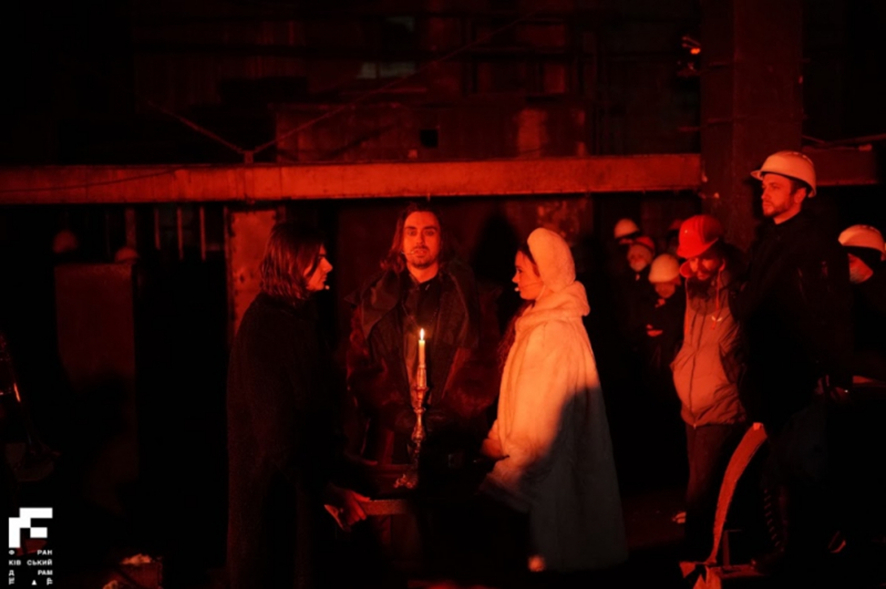
Figure 2. Romeo (Oleh Panas) and Juliet’s (Inna Bevza) Wedding Ceremony.
7In his exchange with Romeo (Oleh Panas), Brother Lorenzo was set against the huge doors representing his monastic cell, signalling the disproportion of the material and spiritual principles in Verona.
8Acting areas were not only on the ground, but also high above, forcing the spectators to quickly adjust their eyes to a new spot where loud noises came from, for instance the basket-like platforms of a crane in which the Capulets were gathered, swinging in the air.
9Another spot represented an elite sports club where Romeo confronted his father or when the young men of both houses could alternatively enjoy physical training. A punching bag hanging from an overhead traveling crane moved forward and backward with much noise, a sauna bath fully equipped with a steamy device where naked young men could be seen through the glass walls, exuding strength and self-confidence.
10The fight between Mercutio (Ivan Blindar) and Tybalt (Yurii Vykhovanets), the central event of this first part, took place in a massive cage walled on three sides with mesh wire.
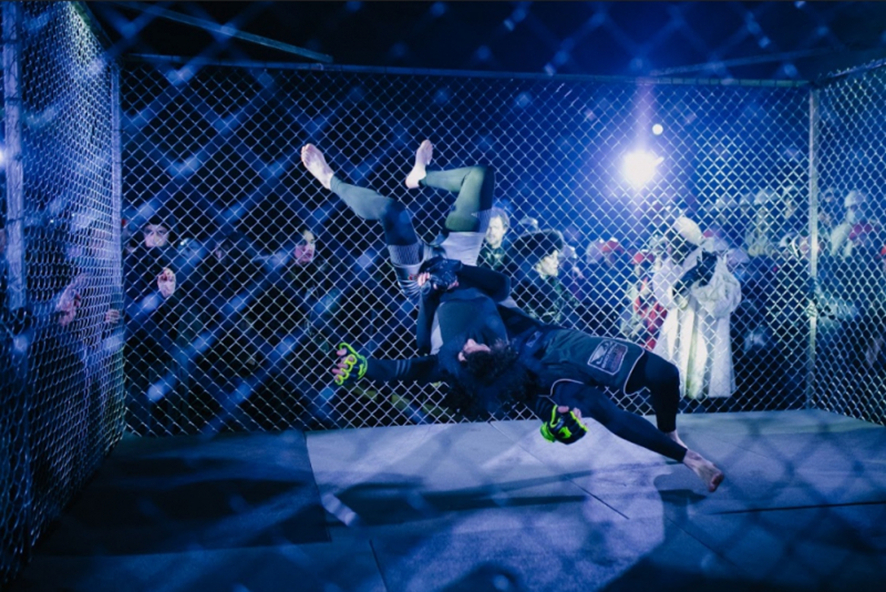
Figure 3. Mercutio (Ivan Blindar) and Tybalt (Yurii Vykhovanets) fight in the cage.
11The bodies of the opponents made a terrible noise when hitting the floor made of a wooded base covered with tatami mats. Tybalt’s athletic wear bore the inscription “Bad Boy”, fashionista Mercutio sported expensive leather gloves. Under a suggestive lighting, the spectators saw the intertwined athletic bodies of the actors, mixing their fake blood, smelling of male sweat, and hearing their accelerated heartbeat. This false and genuine hand-to-hand combat was accompanied by the frantic tempo of Balkan-style music. On all sides of this ring the spectators witnessed this very violent, acrobatic wrestling, turning into the adrenaline-fuelled supporters of the Montagues and Capulets in Medieval Verona.
12The first part of the performance ended on the death of Mercutio and Tybalt, reunited in death.
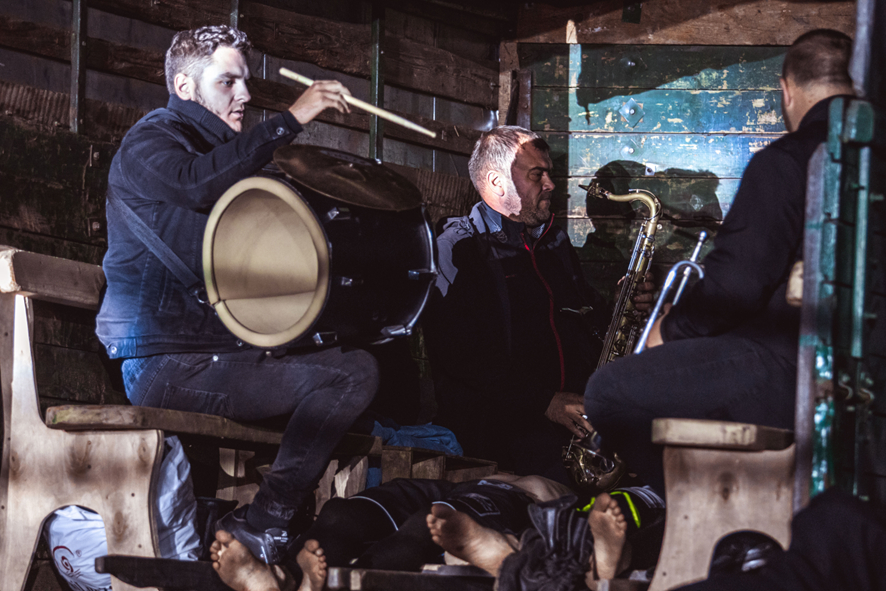
Figure 4. Musicians in the hearse truck.
13In lieu of interval, the performance featured a funeral procession through the city streets (in coordination with the City Council), behind the truck carrying the two bodies. With lamps in their hands and to the sound of live music, the crowds of spectators slowly departed in a mourning column led by some actors dressed as Franciscan monks.
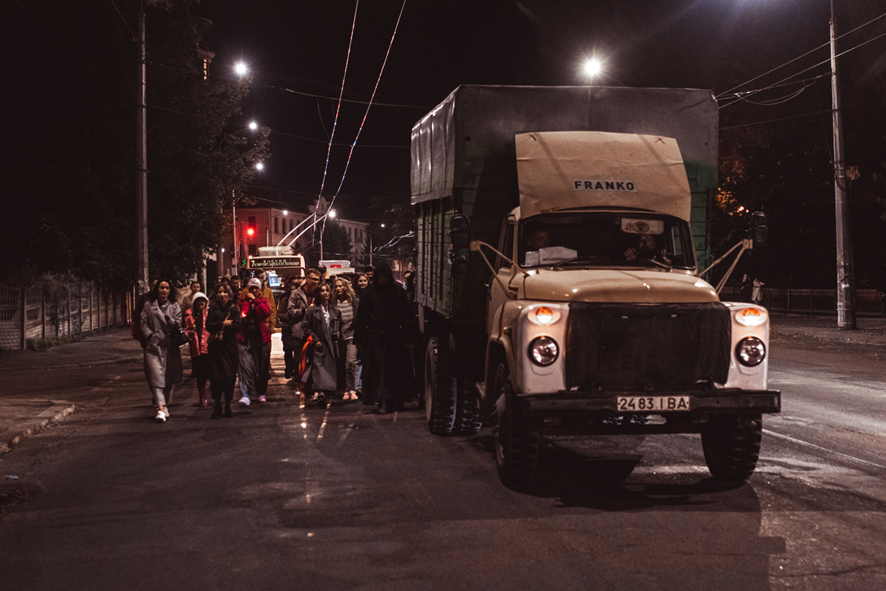
Figure 5. Funeral Procession in the centre of Ivano-Frankivsk.
14The second part took place in the basement of the theatre, divided into several sectors. The closest one, the Hall of Divine Justice, was blocked by an iron mesh, echoing the fighting ring, and recalled the causes of the forced separation of the newlyweds. Romeo and Juliet were isolated from each other, unable to get together again, like lonely birds in cages. To the right was a platform with a tower where, alternately, Romeo then Juliet seemed to freeze like the statues on pedestals of some lovers buried alive. From time to time, their silent presence there, above the ground, transcending suffering, acted as a distancing symbol (the Brechtian Verfremdungseffekt). Brother Lorenzo had changed into the figure of a respectable lawyer in a modern suit, commenting on the tragedy of the young couple. He looked like a Supreme Judge, or some kind of priest in a pagan temple, with the brazier next to him.
15Originally set up for Hamlet, this makeshift auditorium deliberately echoed Shakespeare’s Globe Memorial Theatre. Several layers of massive pipes from the heating system shone brightly over the heads of the spectators, blocking the view, so a large screen had been erected there to allow them to follow the full extent of the stage action.
16Derzhypilskyi rethought in a post-modernist way, the duality of a play set in Medieval Verona against present-day society. Timeless innocence was confronted to Gothic culture, the modern version of ruthless violence. While watching this immersive performance the spectators did not feel like the outside observers of the plot but lived a powerful experience when participating in the crowd scenes, sharing with the secondary characters in the responsibility of causing harm to innocent lovers, with a mixed impression of pain and repentance. This dark, disturbing version of the play was in keeping with the violence of modern times.
17The premiere of the play Romeo @ Juliet took place in February 2021, when Ukrainian society had already had a year of quarantine experience due to the outbreak of the COVID-2019 pandemic. The plague of Renaissance Verona acquired an ominous and specific relevance for the actors and audiences of the play at Frankivsk Theatre. When watching the play, the audience of Rostyslav Derzhypilskyi’s Theatre often wore not only protective helmets, but also medical face masks.
18Since the city of Ivano-Frankivsk is located on the western edge of Ukraine, the full-scale Russian-Ukrainian war that began a year after the premiere of Romeo @ Juliet did not affect it. Already on International Theatre Day 2022, Frankivsk Drama Theatre resumed showing performances for spectators-displaced persons. So, the performance has not stopped being shown in the repertoire for a long time. For three and a half years from the premiere, this play has been performed for spectators on average once every two months.
19As the last play of the 30th Shakespeare Festival in Craiova (Romania) in May 2024, the performance made a powerful impression on the spectators. There were many changes due to the full war raging in the country: the Capulet family emerged from survival blankets, their provisional camp being littered with empty bottles, and Lady Capulet, obviously drunk, offered drinks to some members of the audience; Brother Lorenzo featured a junkie suffering from post-traumatic stress disorder, preparing a coke dose for himself as Romeo was walking towards him; all clad in white, Romeo and Juliet were the innocent victims of the violence of their elders. That is a weighty conclusion indeed.
Pour citer ce document
Quelques mots à propos de : Yuliia Shchukina
Quelques mots à propos de : Liudmyla Vaniuha
Droits d'auteur

This is an Open Access article distributed under the terms of the Creative Commons Attribution License CC BY-NC 3.0 (https://creativecommons.org/licenses/by-nc/3.0/fr/) / Article distribué selon les termes de la licence Creative Commons CC BY-NC.3.0 (https://creativecommons.org/licenses/by-nc/3.0/fr/)